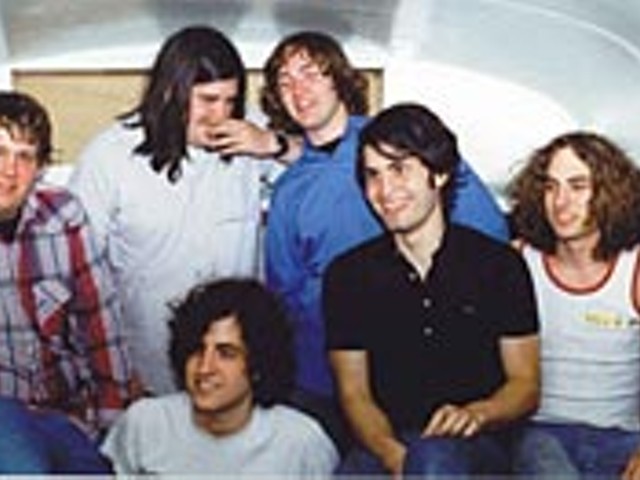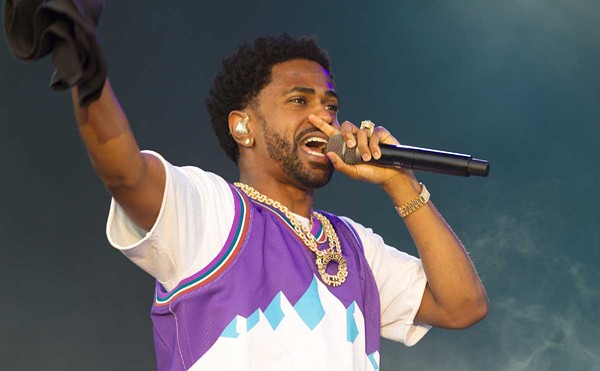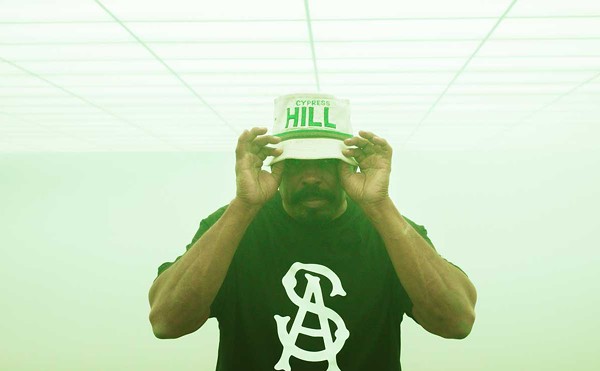It would be difficult to overestimate the importance that Detroit has had on the history of recorded music. The city has been a creative force in soul, blues, gospel, rock, funk, jazz, pop and so on. We all know that.
Yet, what you may not know is United Sound System studio has undeniably been a launching pad for some of the most influential recordings in pop history.
A short list of essential United sessions over the years includes John Lee Hooker’s seminal side “Boogie Chillen,” cut in 1948. A year earlier Miles Davis, Charlie Parker, and Max Roach cut “Klaunstance” for Savoy Records. Marv Johnson and Berry Gordy recorded “Come to Me,” the first release for what would evolve into The Sound of Young America and the juggernaut Motown label in 1958. Darrell Banks recorded his stunning soul masterpiece “Our Love” there in 1966. Marvin Gaye recorded tracks for “What’s Going On” in 1970. The MC5 recorded “Lookin’ At You” there, and Funkadelic, a band that helped give rise to both techno and hip hop, recorded almost everything they ever did at United. Aretha Franklin, Isaac Hayes, The Rolling Stones, and Hillel Slovak-era Red Hot Chili Peppers all recorded within these walls.
Former United Sound owner and Detroit music biz kingpin Don Davis, in exchange for janitorial services, let techno impresarios Jeff Mills and Mike Banks record early Underground Resistance tracks in the same room that Todd Rhodes recorded the R&B classic “Dance of the Redskins.”
An Italian immigrant and recording ace named Jimmy Siracuse opened United in early 1933. Though it started humbly as a single-room studio in a residential space, United is responsible for an almost incalculable amount of what the world regards as the Detroit sound. In the late ’90s, after years of serious neglect, the lights were turned off and the doors of the storied studios shut for what might have been the last time. Despite its notorious history, the studio was abandoned when owner Davis moved on to other interests. The studio was left to rot like so many Detroit landmarks.
Though many of the city’s links to its heyday slowly decay, music once again is pumping from within the United walls. The studio’s rebirth can be credited to attorney Roger Hood and chief sound engineer Kevin Powell.
After a chance meeting in a guitar store, the two struck up a friendship. In late 2002, Hood purchased the studio and the surrounding property for the cost of back taxes and existing liens.
Aside from the building’s meticulously designed acoustic properties, the motivation for revamping the structure is due in no small part to the history of the site.
Powell summarizes the refurbishing thusly: “The place was pretty fucked up. I was fighting the rats to get it back. … This place is beautiful and I grew up on the tracks recorded here, so there’s no way I could let it go down.”
United Sound was reportedly the first independently run recording studio in the country, and maybe the world.
“With all the automotive commercials that needed to be recorded, it just makes sense that an independent studio would spring up in Detroit,” says Ed Wolfrum, the studio’s chief engineer during United’s incredibly prolific 1960s and 1970s.
As the building stands now, there are two studios on the first floor and a third is being constructed on the second floor. The control booth for Studio B is on the south side of the house after you walk through the front door. Though it may break some purist hearts, United Sound has added Pro Tools digital recording software.
Upon entering the control room you are greeted by a massive recording board capable of recording some absurd amount of simultaneous tracks, oversized computer monitors, plush leather couches and a wall of keyboard samplers. “I have built 10 or 11 full studios, but this is by far the largest,” says Powell.
Studio B is a controlled anechoic chamber. With the simple closing of a curtain the studio becomes echoless. It’s a completely unnatural and unnerving semi-silence. Words spoken at normal volume spill from your mouth like lead balloons. There are no variables, no uncontrolled feedback or weird reverb coming from the far corner, ceiling or floor. It’s not a coincidence that you hear John Lee Hooker’s hand smack his guitar strings or his foot stomps on the floor of Studio B. Ed Wolfrum, who also engineered several legendary Motown sessions including Martha Reeves and the Vandellas’ “(Love is Like a) Heatwave,” and Stevie Wonder’s “My Cherie Amour,” says, “I liked United better than Motown; you could get a better sound.”
Studio A is an extension off the back of what was originally a regular two-story neighborhood home. This studio is much larger and has a raised roof, vocal and drum booths, and a basketball court. The room’s painted cement floor and high ceilings give the recordings tracked here a sound that’s more “live.” The gnarly ’70s color scheme makes it easy to imagine George Clinton et al. blowing their brains on some hideously funky, wah-wah driven, pile-driving session.
As much as the musical history is riotous here, Roger Hood, the current owner, is a stone-cold businessman. He’s organized. And he wants the studio to succeed, for many reasons. A conversation with the University of Detroit grad yields more quotes about “returns on investments,” “intellectual property,” and “residual royalties,” than ravings about brilliant musicians, guitar amps or great songs from his youth. Yet he can be an eloquent spokesperson and a wise-cracker full of street braggadocio. But in chatting with the man it’s obvious he’s dedicated to his employees, the city and his business.
“We want to make Detroit a better city,” says Hood. “Some folks pack up and leave but we have decided to stick it out and make our stand.”
The first commercial project that Hood and team have worked is the debut effort from Christian rapper Paul “CPR” (Christian Poet Resurrected) Daniels. Listening to the crisp sounds of the bass drum kicking beneath loping gospel rhymes through United Sound’s studio monitors reveals a recording that’s sonically up-to-moment, yet retains the studio’s vintage sound. The mix is remarkable, a fitting debut for the revamped studio.
Funkadelic once recorded a funky blues track called “Music For My Mother” at United. That song’s title is an ironic foreshadowing of CPR’s sound. “Paul’s music is something that we can be proud of,” says Hood. “It’s not the type of stuff that you would be embarrassed for your mother to hear.”
CPR’s updated funk for mothers, revivalists, hip-hop heads and Detroit music fans might serve the resurrected and modernized studio well. Currently, George Clinton is in the studio tracking for a new solo record. Things are looking good so far.
Studio Manager Karma Middleton sums up the atmosphere at the studio these days: “The vibe here is just fantastic. It’s like you can’t go wrong.”
Here’s hoping she’s right.
CPR is scheduled to open this year’s Hip-Hop Summit at the Fox Theatre (2211 Woodward Ave., Detroit; 313-983-6611) on Saturday, May 22, at 10 a.m. United Sound will host its grand reopening ceremony Sunday, May 23, at its studios (5840 Second Ave., Detroit. 313-831-8590). The celebration begins at 3 p.m. Surprise guests to be announced.
Adam Stanfel is a freelance writer. E-mail [email protected]




